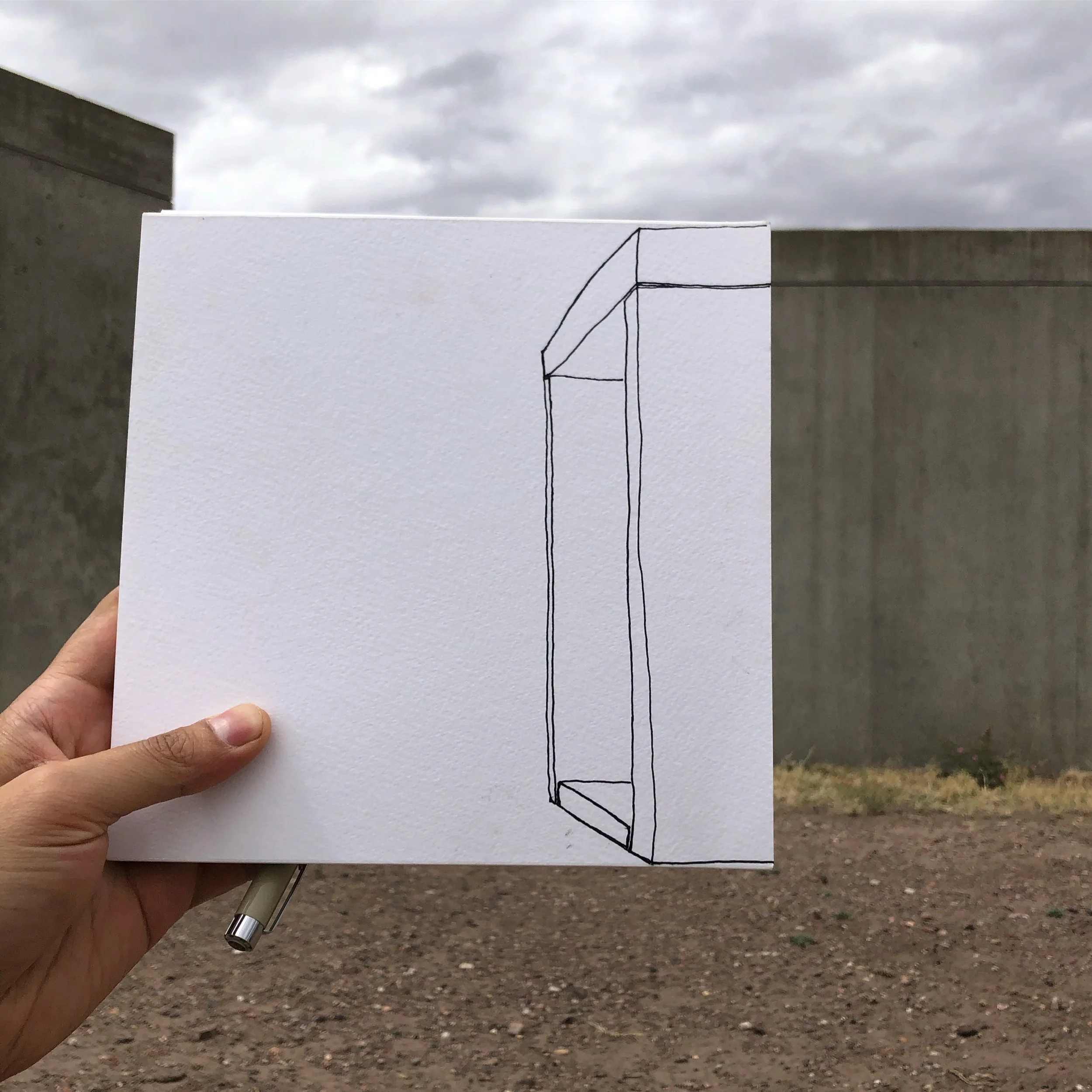





















Today, art historians can capture an image on their phone in seconds. This tool has made it beyond easy to document museum, studio, and gallery visits. Once gathered, we can also zoom in on images and manipulate them in myriad other ways to facilitate our studies. Not so for previous generations. Until cameras, much less smartphones, advanced enough technologically to become adequate tools for capturing an artgoing experience, sketch and watercolor notebooks were the art historian’s ally in recording an image for later study. As an artist trained in art history, I employ this method of study to produce new works.

Paper, watercolor, acrylic, colored pencil, indigo, string, mirror, marble
From the exhibition label:
“Here I employ watercolor to meditate on one of Robert Smithson’s nonsites. I also present more typical scholarly methods, such as citation of published and public words related to my object of study. While this assemblage sculpture with a watercolor at its heart does not present as a typical written document, it still invites reading. Who says an art historian must produce only peer-reviewed publications on an artwork? And who says reading shouldn’t activate your whole body? There are as many ways to study art as there are ways to make it.”
Image: work installed alongside Robert Smithson, Double Nonsite, California and Nevada, 1968-1969, in Scriptorium con safos: Syracuse, Syracuse University Art Museum, August 24, 2023 - May 12, 2024

watercolor, ink on paper
13 parts: 8 x 8 inches each